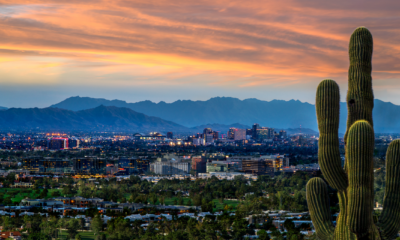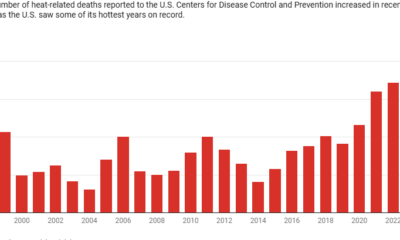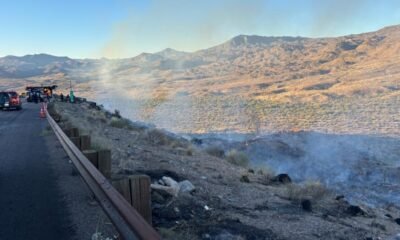environment
Wildfire Smoke Lingers: Essential Tips for Purifying Your Indoor Air

Wildfires sweeping across the western United States this summer have raised significant health concerns, with smoke affecting millions and expected to persist into the fall. Research indicates that tiny particles in wildfire smoke can infiltrate the lungs and even enter the bloodstream, leading to a twofold increase in asthma rates and a 40% rise in strokes and heart attacks. Such smoke exposure has also been linked to increased hospital admissions, emergency room visits, and premature deaths.
Experts advise residents to remain indoors during heavy smoke conditions; however, smoke can infiltrate homes, prompting many to invest in air purification solutions. Deborah Bennett, a public health professor at the University of California-Davis, suggests that individuals should consider air cleaning devices, even if used intermittently during fire season. Various cost-effective options exist, accommodating different circumstances and budgets.
If a home is equipped with an HVAC system, it typically recirculates indoor air. Those with air conditioning units that allow fresh air intake should disable this feature during smoke events. It is also essential to keep doors and windows closed to enhance air quality efforts.
To improve indoor air filtration, many experts recommend upgrading to a MERV 13 filter, which captures a significant percentage of small particles. These filters are widely available at retailers like Costco and Home Depot, generally priced around $20 each. Homeowners should consult an HVAC professional before installation, as higher-efficiency filters can restrict airflow and affect cooling and heating efficiency.
For those without central air systems, portable air cleaners with true HEPA filters can effectively remove most smoke particles from indoor air. These devices can be placed in frequently used rooms and moved as necessary. Air quality specialist Sarah Coefield emphasizes that with appropriate precautions, including closing doors and windows, individuals can achieve quick improvements in air quality.
For families, having one air cleaner per bedroom is ideal; however, consolidating everyone in a single room during smoke emergencies may be necessary due to resource constraints. Portable HEPA air cleaners range in price dramatically, from under $100 to over $1,000, depending on their coverage area, with effective models often available for under $200.
In California, all air cleaning devices must meet the state’s stringent certification requirements. Consumers are encouraged to research products using resources like the California Air Resources Board and Consumer Reports, especially to avoid ozone-emitting devices that can worsen air quality.
Individual experiences highlight the urgency of effective air purification strategies. Gina Spadafori from West Sacramento has adapted her HVAC usage during wildfire seasons to protect herself from hazardous air conditions. She operates her air cleaner before bedtime to ensure a healthy sleep environment, referring to it as a necessary defense against poor air quality.
A more budget-friendly solution involves creating a DIY air purifier by attaching a high-efficiency filter to an electric box fan, with guidance available through various online resources. The EPA endorses using newer box fans to mitigate fire hazards associated with older models.
Nonprofits and local government initiatives have stepped in to help those less able to afford effective air cleaners. Programs distributing air filtration devices to low-income individuals in California and Montana aim to address the disparity in access to clean air. However, these localized efforts are only a fraction of what is needed, with calls for broader support from government and healthcare organizations echoing among advocates like Amy Cilimburg.


















